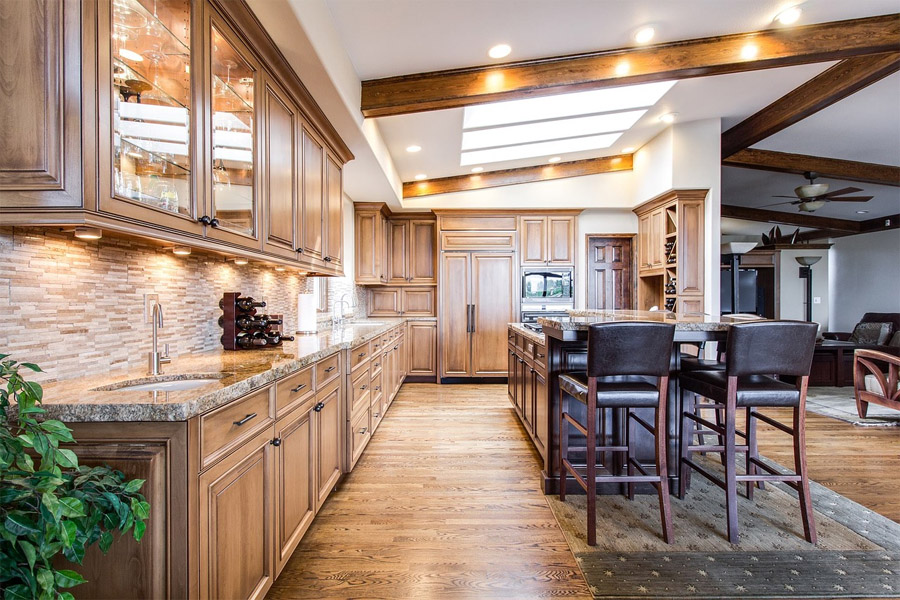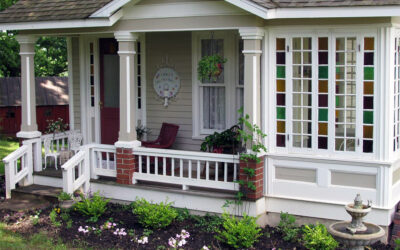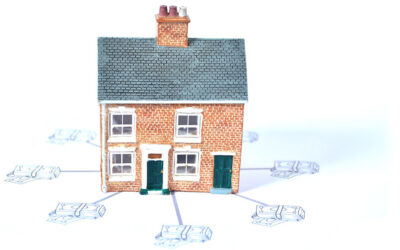
It seems like landlords need new flooring between every single tenancy. So what flooring options are available, how much do they cost, and how does new flooring affects your property value?
Whether repairing flooring that has seen better days or sprucing up your property’s interior design (or both), installing new floors can be an expensive undertaking if you don’t know what to expect. Your total new flooring cost can vary widely, but this comprehensive guide can help point you toward options that match your budget.
How Much Does New Flooring Cost?
Your overall new flooring costs depend on a number of factors. Materials tend to make up the biggest expense, followed by labor costs, which vary depending on the company and complexity of the job. Total labor costs can be anywhere from $0.60 to $4 per square foot, according to HomeAdvisor. Now, let’s talk materials.
“The highest expense is going to be a natural stone tile flooring like granite, marble and travertine,” said Docia Boylen, the owner and founder of Handyman Connection of Golden in Lakewood, Colorado.
Hardwood flooring and flooring made of engineered wood also tend to be on the higher end of the price spectrum. The latter is a hardwood alternative that consists of two parts — a top layer of an attractive natural wood with a supportive layer underneath to keep it sturdy. This second layer can be made of materials such as particleboard or plywood.
Laminate flooring is one of the most popular types of flooring Boylen is installing right now. It’s a wood alternative that clicks together, making for easier installation when compared to traditional hardwood floors.
“It’s waterproof,” Boylen said, “so it’s great for water areas like basements because if there’s a flood, you can literally pick the flooring up, clean it and put it back down.” That makes it a great choice for tenant-proofing your property as well, as renters inevitably spill drinks and accidentally splash water on your flooring.
With that said, the average price to install new flooring in a 500-square-foot space is roughly $2,961, according to HomeAdvisor.
/filters:quality(80)/2021-07-07-New-Flooring-Cost-table.png)
Cheapest Type of Flooring
If landlords can’t keep their maintenance costs low, they end up with weak or even negative rental cash flow. Here are a few affordable options for new flooring.
Linoleum & Vinyl
In terms of flooring options on the cheaper side, Boylen points to both vinyl flooring and linoleum. While some may see linoleum as an out-of-date option that peaked in the 1980s, one thing it has (on top of a low price point) is its long lifespan. Some experts say linoleum can last up to 40 years. The caveat is it’s not very DIY-friendly. What’s more, if you don’t properly care for linoleum floors, they can turn yellow as they age.
Vinyl is another affordable option generally easy to install. The main downside is it tends to be less durable, only lasting about half as long as linoleum. The draw, however, is vinyl flooring can create the illusion of real wood flooring.
Nowadays you can also install waterproof luxury vinyl tile that’s incredibly durable and looks like wood. But it costs more than your standard vinyl or linoleum flooring.
Carpet
Depending on the size of the room and the material you choose, carpeting could be a budget-friendly flooring option. Opting for a middle-of-the-road polyester carpet over nylon, for example, might be a great fit for middle-income rental properties. The kicker is it also holds up better against stains.
There are cheaper materials out there, but you’ll likely get what you pay for. Going with a less durable option could translate to more maintenance — and it may not age well in areas tenants walk on frequently. Still, tenants are hard on carpets, and landlords often have a hard time convincing a judge that the carpets had to be replaced because of “damage” rather than “normal wear and tear.” So the line gets blurry about whether you can keep a tenant’s security deposit if they ruin your rug.
(article continues below)
DIY Flooring Installation
Choosing the do-it-yourself route is one way to save and eliminate labor costs. Depending on the size of your rooms, this could work out to significant savings. Options like laminate flooring are complete with clickboards you can sync together pretty easily.
“Most of the manufacturers link you to a YouTube video where you can learn to install them yourself,” said Boylen. “The hardest part is having the right tool to cut it if you need to cut a side.”
Fortunately, you should be able to rent these kinds of tools from your local hardware store. Tiling isn’t as difficult as you might think, especially because large tiles are trending right now. They’re generally easy to cut, and you can rent a wet saw and cut them yourself.
Of course, not all flooring types lend themselves to easy DIY installation. Boylen recommended going with professional installation if you’re working with radiant flooring. Installing smaller tiles can be an arduous task as well. Another thing to think about is what’s underneath your current flooring, which could necessitate the help of a professional.
“If you want to put down these beautiful, natural stone tile floors, but the concrete underneath is all warped and wrinkled, you’re going to spend thousands of dollars to level that floor before you can even put your flooring on it,” said Boylen.
Floor Repair Cost vs. New Flooring Cost
If your current floors are damaged, you may not need to install all new flooring. It ultimately depends on the flooring type. If it’s a hardwood floor that’s warped or severely discolored, Boylen said replacing the floor may be your only option if you want it to match. This is especially true if it’s an older floor. Oak from, say, 30 years ago may not look like oak today.
“You can repair the area then re-sand and restain the whole area, but the oak could also take the stain differently,” Boylen said. “Hardwood floors are really hard to repair.”
Tile floors, on the other hand, can be repaired if you saved some of the original tiling or found an exact match elsewhere. The same goes for clickboard-type flooring made of laminate or engineered wood. (Costs will depend on the square footage you need.) You can even replace bits of damaged carpet, assuming you have extra left over from the original installation. Just keep in mind that brand-new patches may stand out against the rest of the carpet if the older parts were subjected to a lot of wear and tear.
Related Article Read: How to invest 1000$ in real estate?
Related Article Read: How to avoid 20% down payment on investment property?
Does New Flooring Increase Property Values?
New flooring in a home may increase the value, but it comes down to the personal taste of the buyer. While one may hate carpet, another may prefer it if they have young children who are prone to tripping and falling.
“I tell people to talk to a real estate agent before making big changes to their home,” said Boylen. “They should be an expert in the area where your home is being sold and should be able to tell you what buyers in that area are looking for.
If your floors are in truly rough shape, sprucing them up with new flooring will likely help boost your home value. Those who put in new wood flooring may be able to recover 91% of the cost when selling, according to the National Association of Realtors.
With rental properties, buyers care less about personal preferences or taste and more about durability and presentability. They want floors that look modern, fresh, and clean, that won’t stain or discolor at the first abuse by a tenant.
The total cost of new flooring, and the return you can expect from that investment, both depend on many factors. In the end, your unique needs, square footage and chosen materials will likely play the biggest role.♦
What are your favorite types of flooring for rental properties? Why?
Related Article Read: How to buy an investment property with no money down?
Related Article Read: How to calculate depreciation on rental property?
More Real Estate Investing Reads:
This article originally appeared on Ownerly.com and is republished here with the author’s permission.


























Do you know if these values will be modified due to the current inflation?
I’d expect to pay closer to the high end than the low end of the pricing range right now.
Water-proof flooring is my best choice for my rentals. It’s classy and cost efficient!
Yeah I like waterproof LVT for the first floor of rental properties.
Carpets are the last flooring I would install. It’s high maintenance, and prone to insect infestation. I like luxury vinyl.
I hear you Erika!
I always use hardwood flooring and I rarely had problems with it. However, other landlords within the area are using different type of flooring and I was wondering if that could be a factor of making my rental outdated.
People love hardwood floors. I’d keep using it if you haven’t had problems with tenant damage.
For flipping houses and updating or fixing floors, marble flooring is my favorite! It’s expensive but it appreciates the property value most of the time!
For higher-end homes marble flooring can definitely make sense!
Can’t go wrong with luxury vinyl tile. Cheap and durable.
Amen Benny!